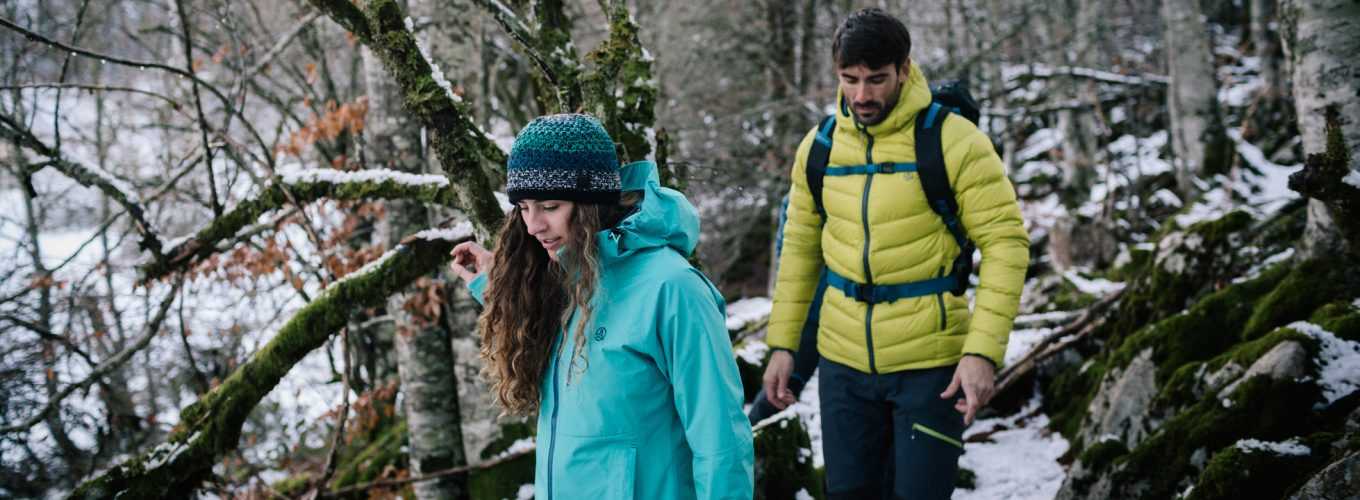Welcome to the world of mountain adventure! If you're planning a trip to enjoy the nature and excitement that the mountain offers, it's important to consider the proper use of clothing layers. In this article, we'll discuss the importance of clothing layers for a mountain adventure trip, the different types of layers you can use, the history behind the idea of layering clothing, as well as the advantages and disadvantages of using clothing layers. Let's get started!
The mountain is a changing place. Throughout the day, temperatures can vary significantly, depending on altitude, sun exposure, and time of day. Therefore, it's important to dress in layers to be able to adapt to these temperature fluctuations. Additionally, layers allow you to adjust your level of warmth and comfort according to your needs, which is especially important in a situation where you can't control the environment.
Below, we describe the different types of layers you can use for your mountain adventure trip:
The base layer is the first layer of clothing that is placed on the skin and is the layer closest to the body. It's designed to keep you dry by absorbing moisture and transporting it away from the skin. The base layer can be made of different materials, such as merino wool, silk, or synthetic materials.

Layer The mid layer is placed over the base layer and is designed to insulate heat and keep the body warm. It can be made of materials such as wool, down, or synthetic fibers.

The outer layer is the most external layer and is designed to protect you from wind, rain, snow, and other external elements. It can be made of materials such as Gore-Tex or waterproof and breathable fabrics.

The idea of dressing in layers has a long history and dates back centuries. Nomadic peoples in Asia and Europe, for example, wore layered clothing to stay dry and protected from the cold. Hunters and mountaineers also used layered clothing to stay comfortable in extreme conditions.
In the 19th century, mountaineer and writer John Ruskin popularized the idea of dressing in layers in his work "The Ethics of the Dust," in which he advised his readers to dress in layers to be comfortable outdoors. Since then, the use of clothing layers has become a common practice for outdoor activities and mountain sports.
Adaptability to changing weather conditions: Layers allow you to adjust your level of warmth according to temperature and other environmental factors.
Versatility: You can remove or add layers as needed to adapt to changing conditions.
Comfort: Clothing layers allow for greater comfort compared to a single article of clothing, as you can adjust your level of warmth and comfort according to your needs.
Reduced sweating: Using proper clothing layers helps keep your body dry and reduces excessive sweating.
Protection: Clothing layers can protect you from external elements such as rain, wind, and snow.
Weight and bulk: Wearing multiple layers of clothing can add weight and bulk to your backpack, which can be a disadvantage if you have to carry all your gear up the mountain.
Cost: Using proper clothing layers can be expensive, as it may require purchasing several articles of clothing.
Comfort: If clothing layers are not properly selected or not put on correctly, they can restrict your movement and reduce comfort.
In summary, dressing in layers is essential for an adventure trip in the mountains. It allows you to adapt to changing weather conditions, protect yourself from external elements, and maintain adequate comfort. If you select the right layers of clothing and use them properly, you can fully enjoy your adventure trip in the mountains.
 Consult an expert
Consult an expert
 Chat
Chat